Mold Control After Water Damage
After water damage, materials such as wood, concrete, bricks, etc. soak up water. After a short time, mold starts to grow on the damp surfaces. Treatment with Sanosil disinfectant eliminates the mold and provides the necessary time to dry out the flooded areas.
- What is treated? Mold-infested concrete surfaces in an air raid shelter
- With which product? Sanosil S010 Mold Control Agent
- Method of application? Direct and targeted spraying using an airless spray device
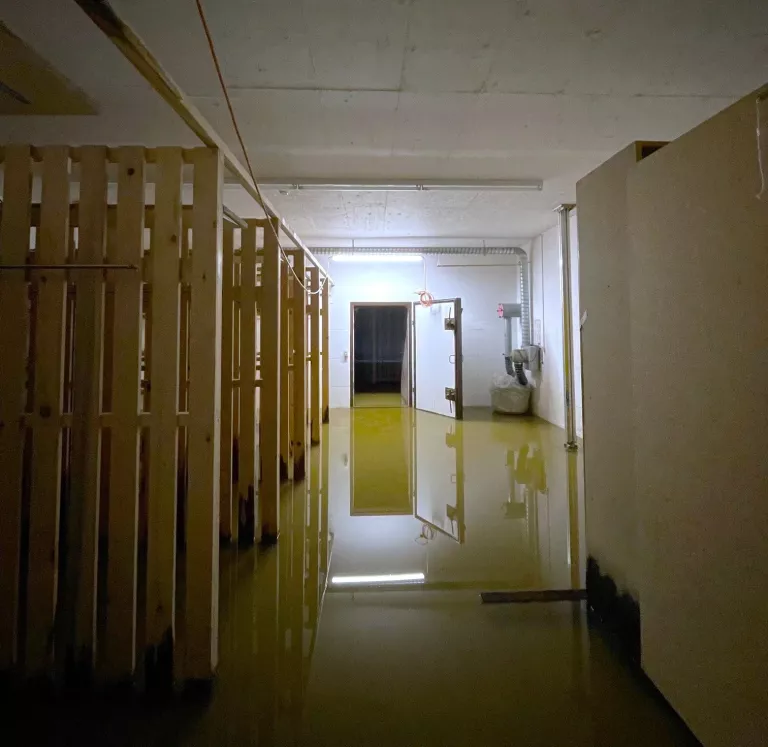
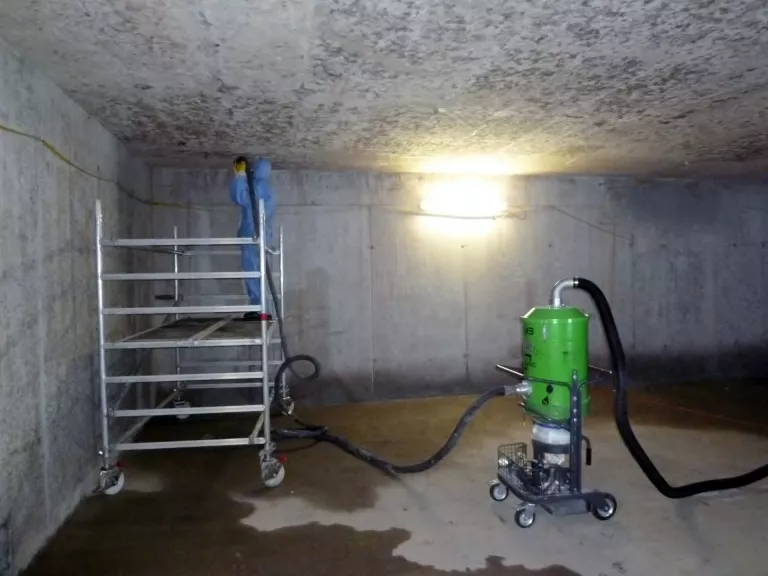
Scenario description
In an air raid shelter, material fatigue causes a hairline crack in a water pipe. As a result, water flows into the rooms over several weeks. Thanks to some drains, the water does not rise more than a few centimeters, but it saturates the structural concrete walls. Simultaneously, the humidity levels are significantly elevated.
Special considerations
Newer concrete surfaces typically have a high pH level and are less susceptible to mold growth. However, in this case, the walls are older and the surface pH level is practically neutral. Dust deposits provide necessary nutrients, leading to widespread mold growth on large parts of the walls and ceilings. Since the rooms must be maintained in a legally usable condition, this constitutes an unacceptable state.
Implementation:
After stopping the water ingress and pumping/extracting the water, all irreparably damaged materials are removed and disposed of where possible. Mold-infested surfaces are sprayed with Sanosil S010 using an airless spray device to halt further spread and growth of mold. Powerful dehumidifiers are then employed to dry out the saturated walls and floors, which takes a considerable amount of time. Subsequently, the affected surfaces are disinfected again with Sanosil S010 to eliminate any remaining microbial biomass mechanically.
Finally, an aerosol disinfection is performed to neutralize any residual spores on surfaces and in the air.
Result:
Following the initial disinfection, bacterial concentrations on surfaces and spore concentrations in the air significantly decrease. As a positive side effect, the strong musty odor is notably reduced olfactorily. (It is believed that the oxidative effect of hydrogen peroxide has led to at least partial breakdown of VOCs responsible for the odor.)
Further air germ count measurements and swab tests conducted during and after the remediation confirm the effectiveness of the measures taken. Upon completion of the work, only occasional spores are detectable, with levels lower than those found in outdoor air.
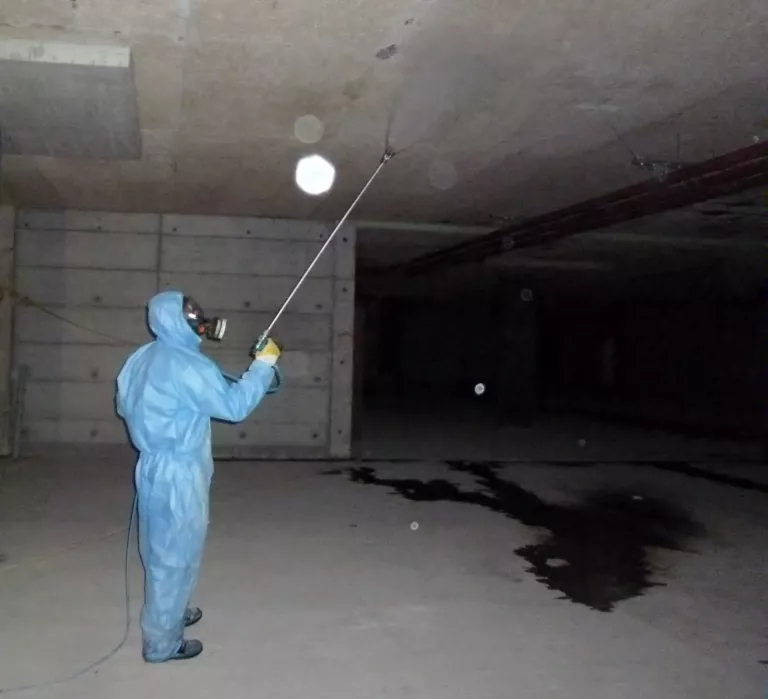
Relevant Brochures
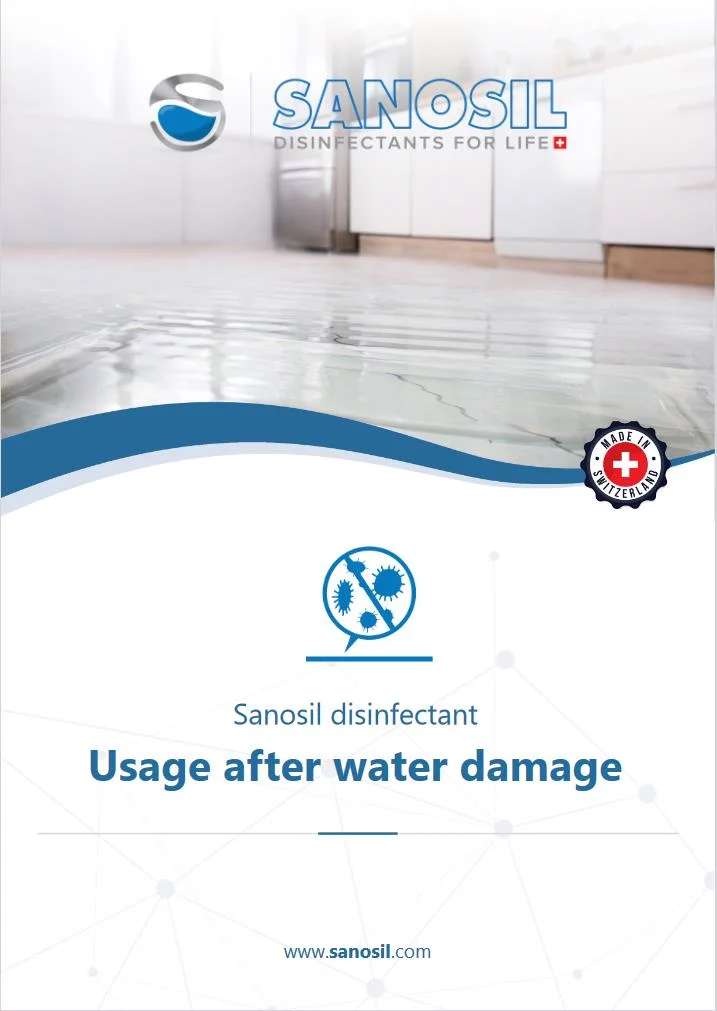
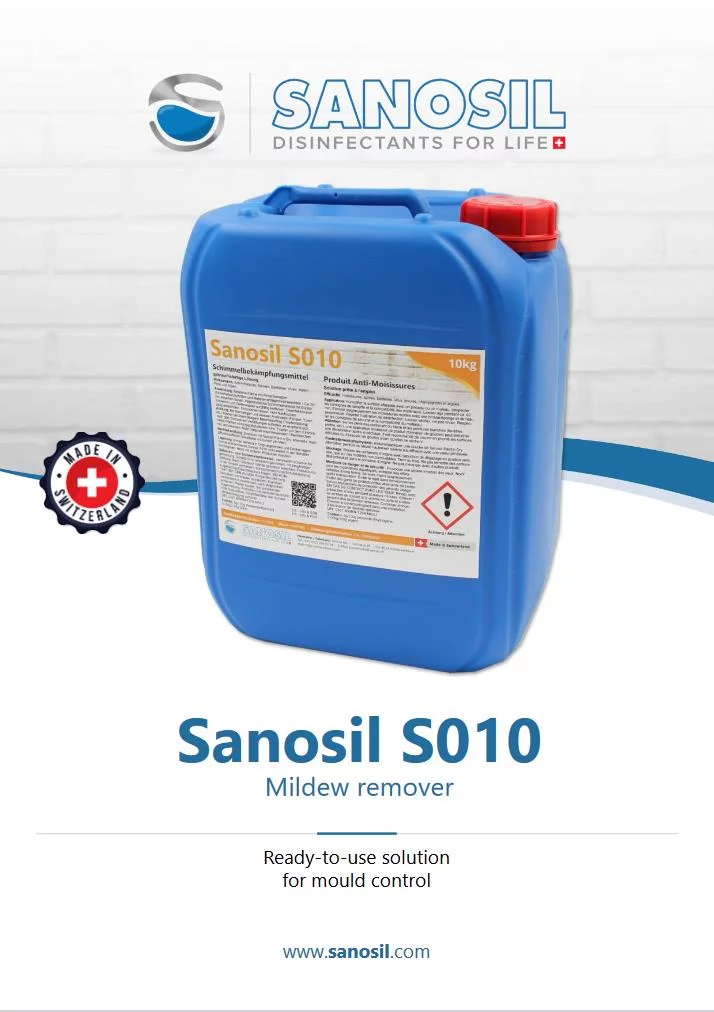
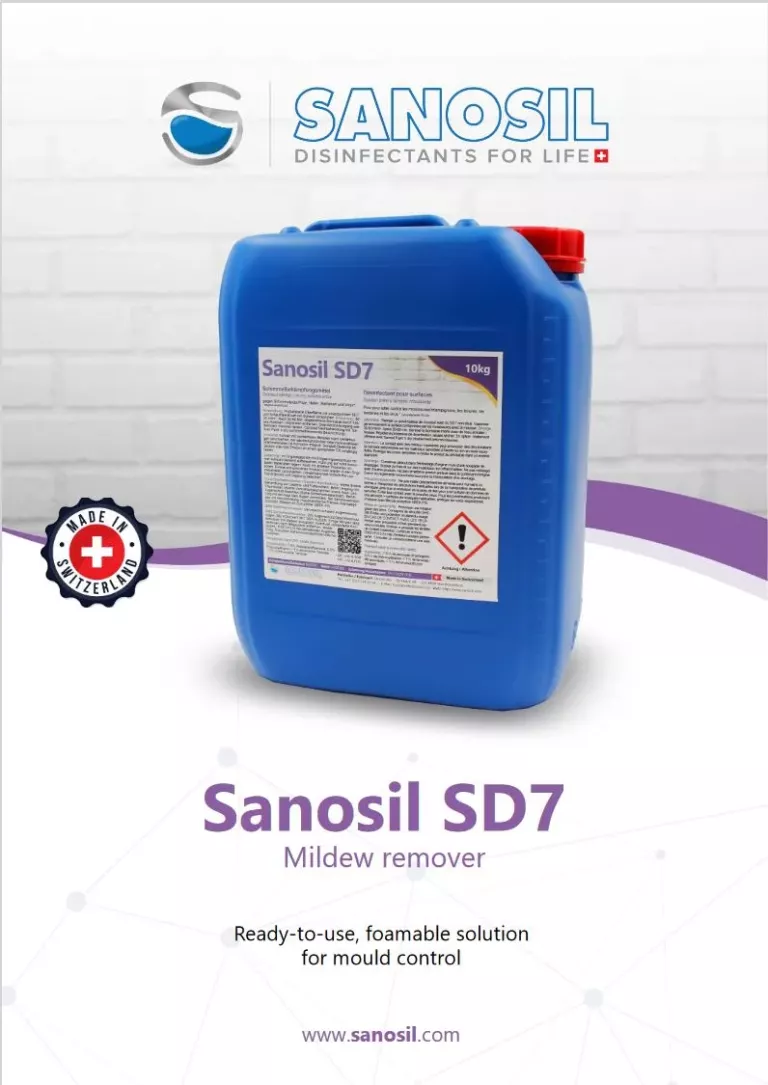
Core Competencies
Our core competencies include the manufacturing and application consulting of disinfection products for water systems, surfaces, and air (complete room disinfection).
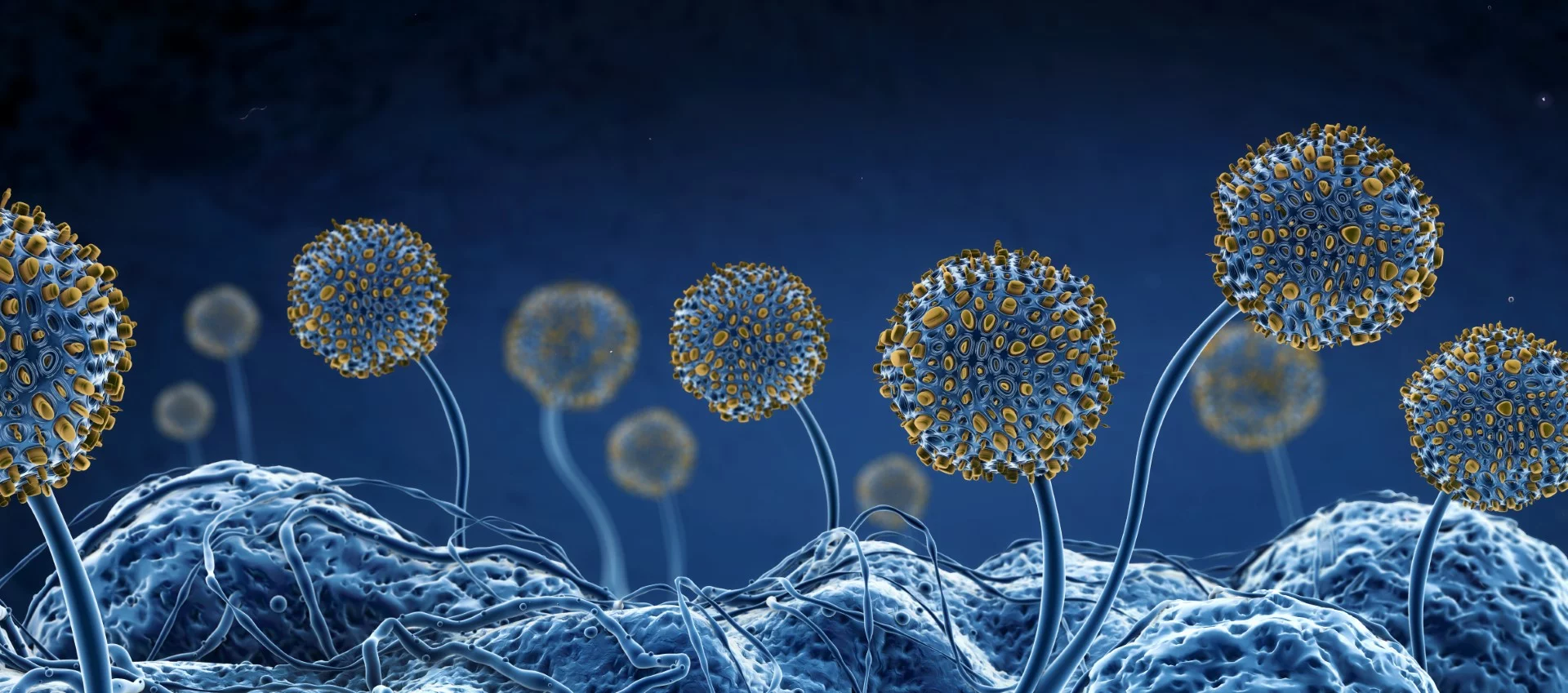
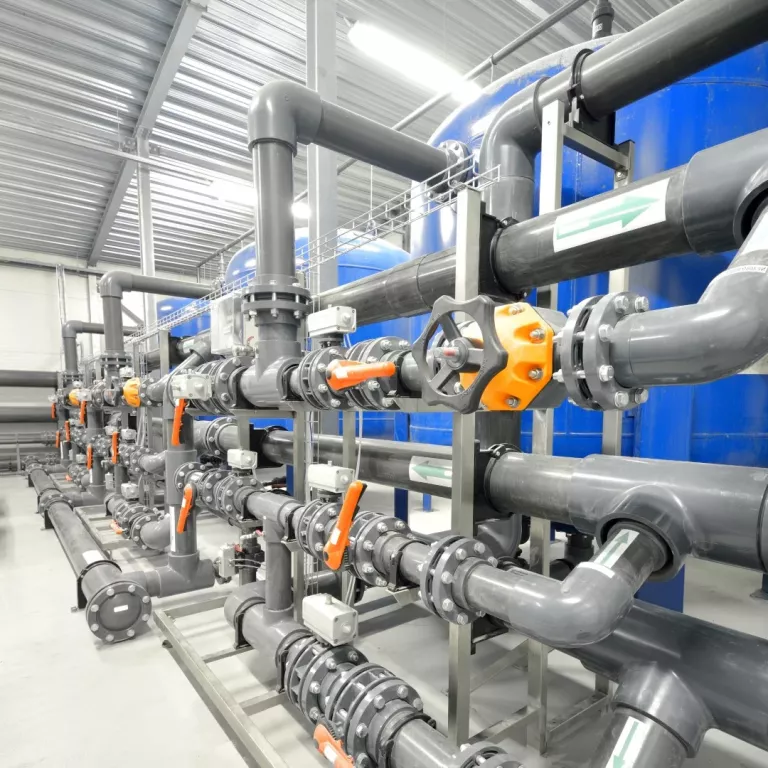

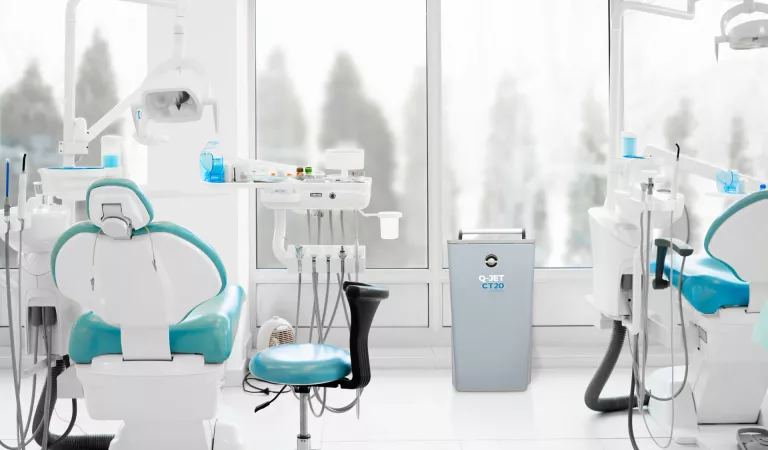

0 COMMENT(S) ON THIS ARTICLE
Please note that your sent comments must first be approved by our moderation team before they become visible.